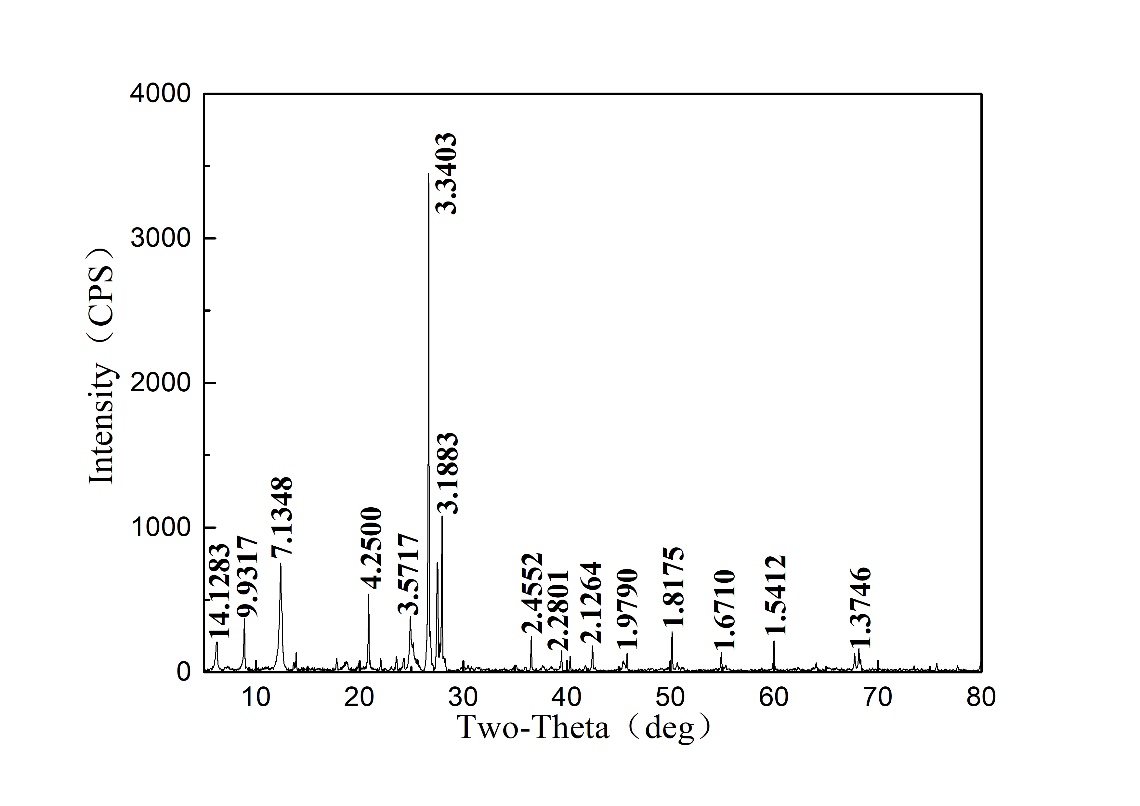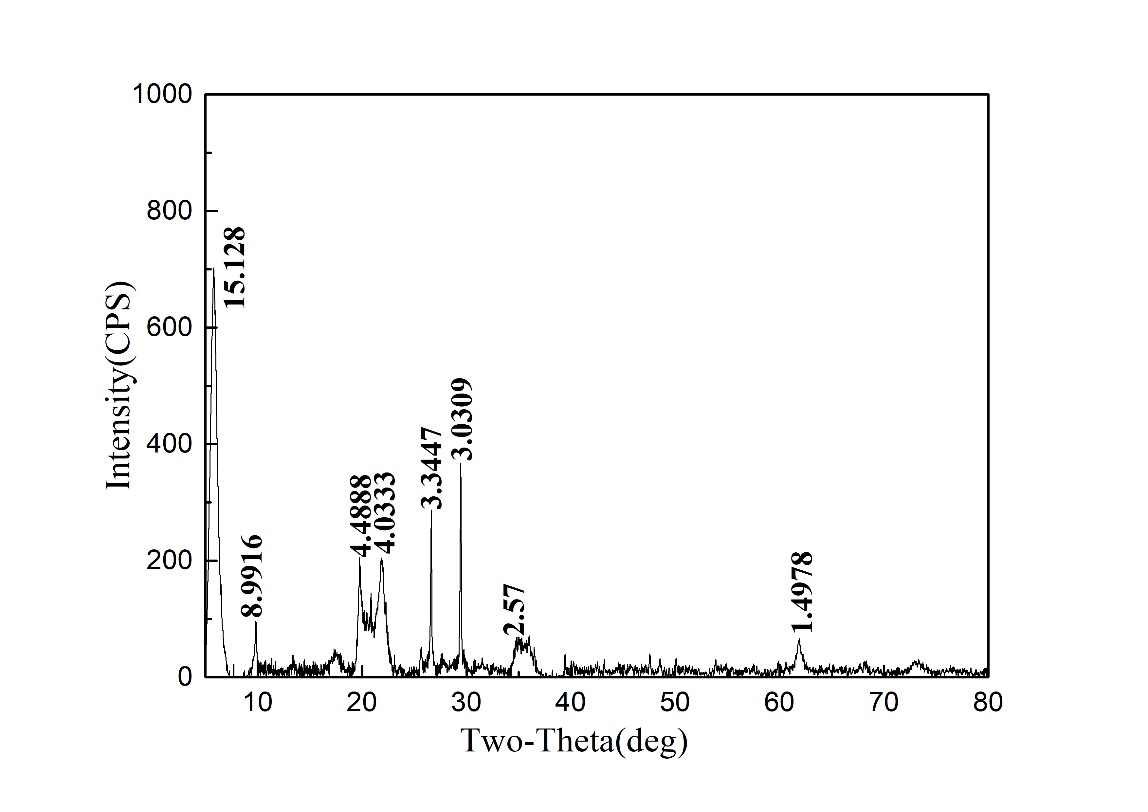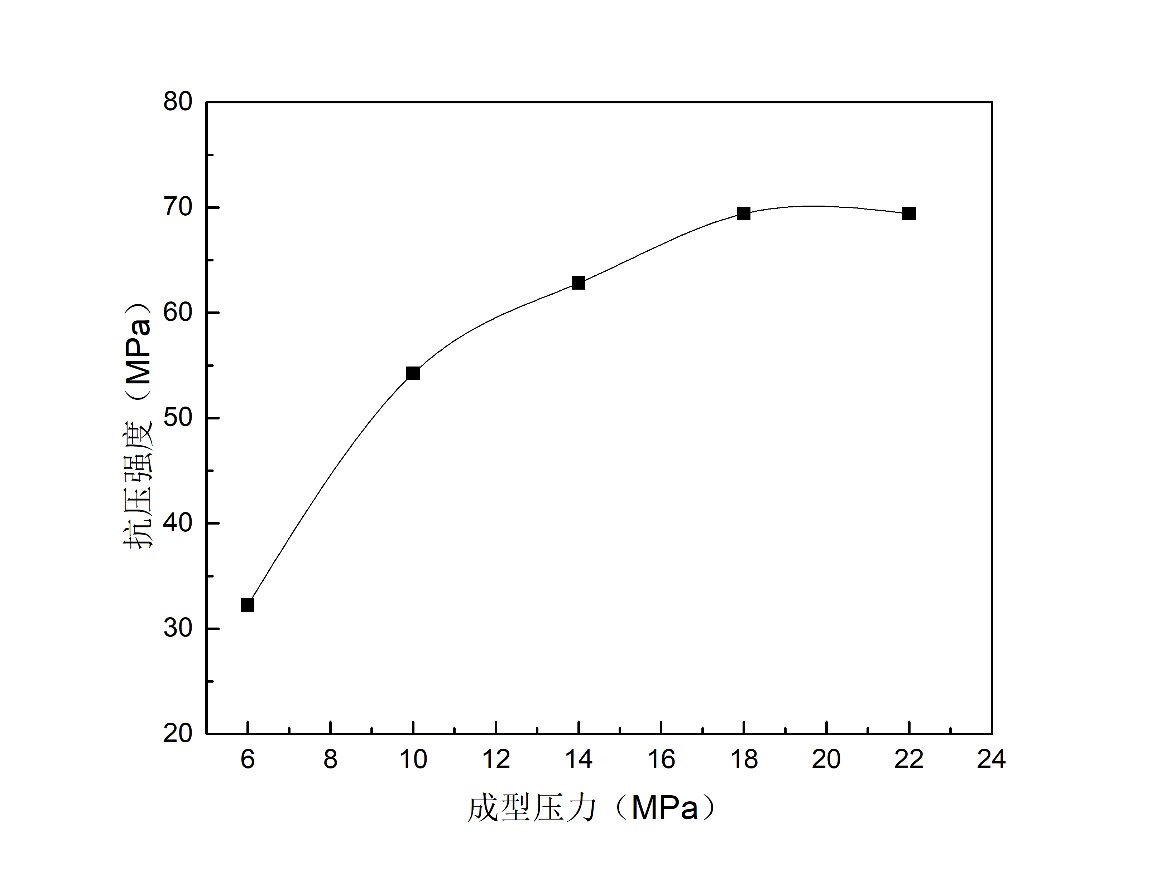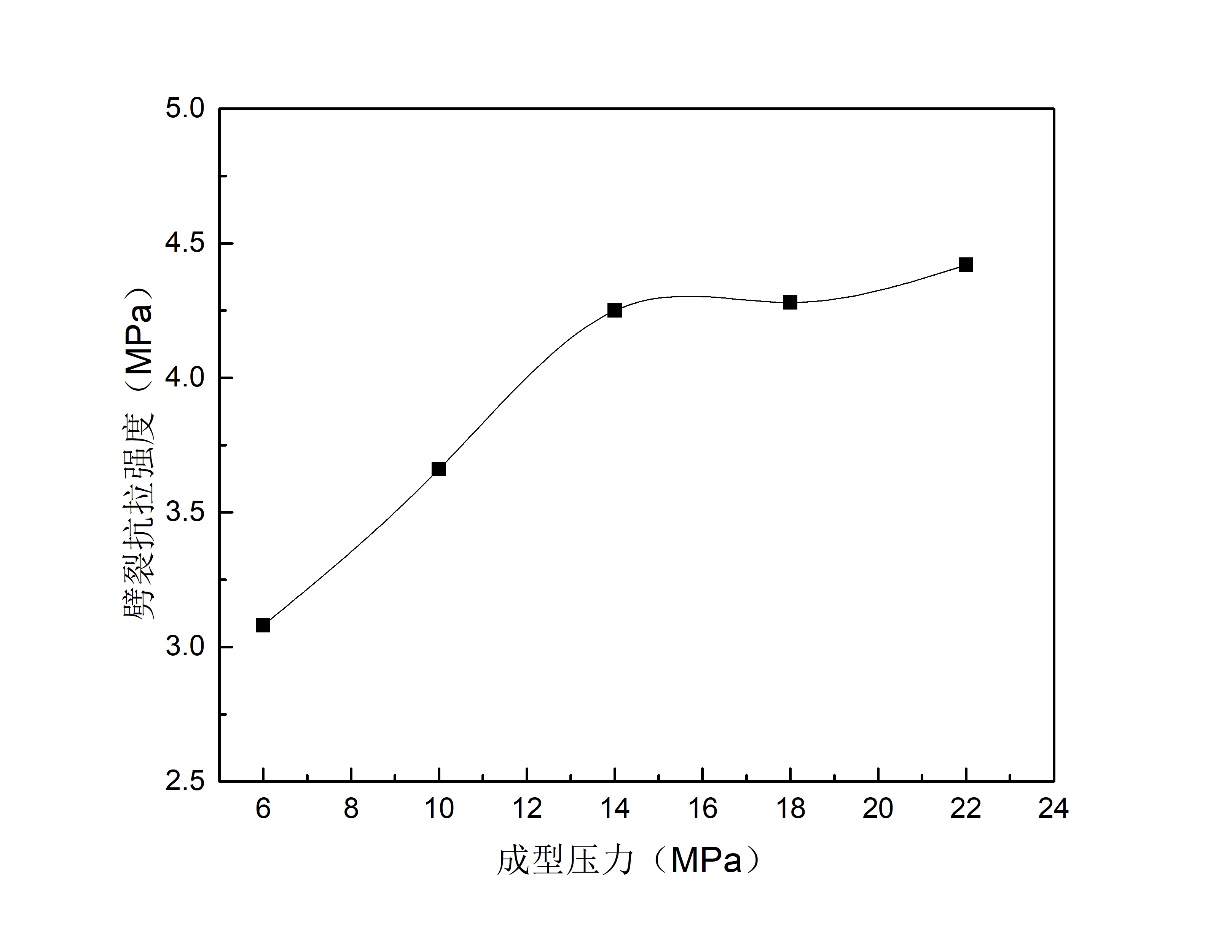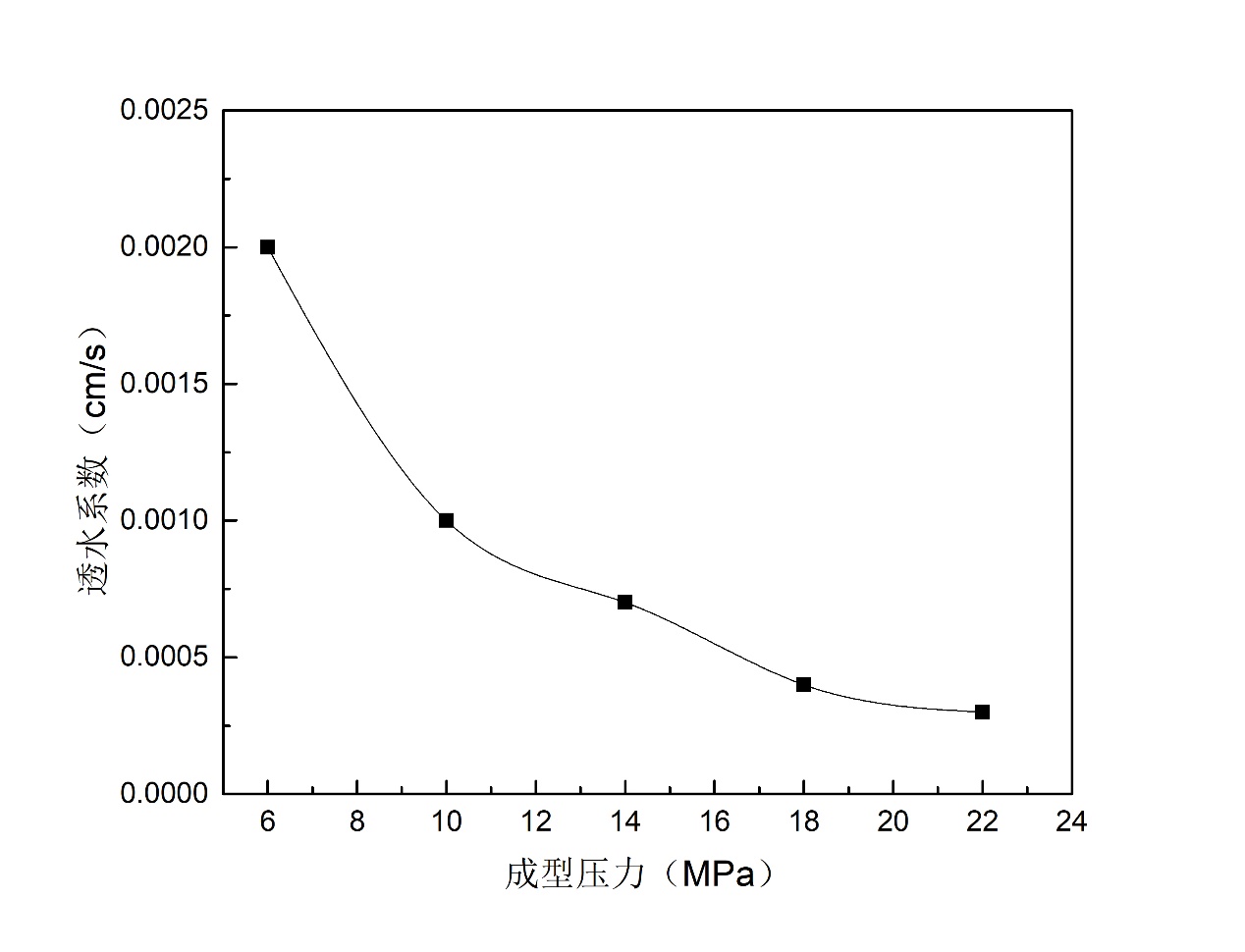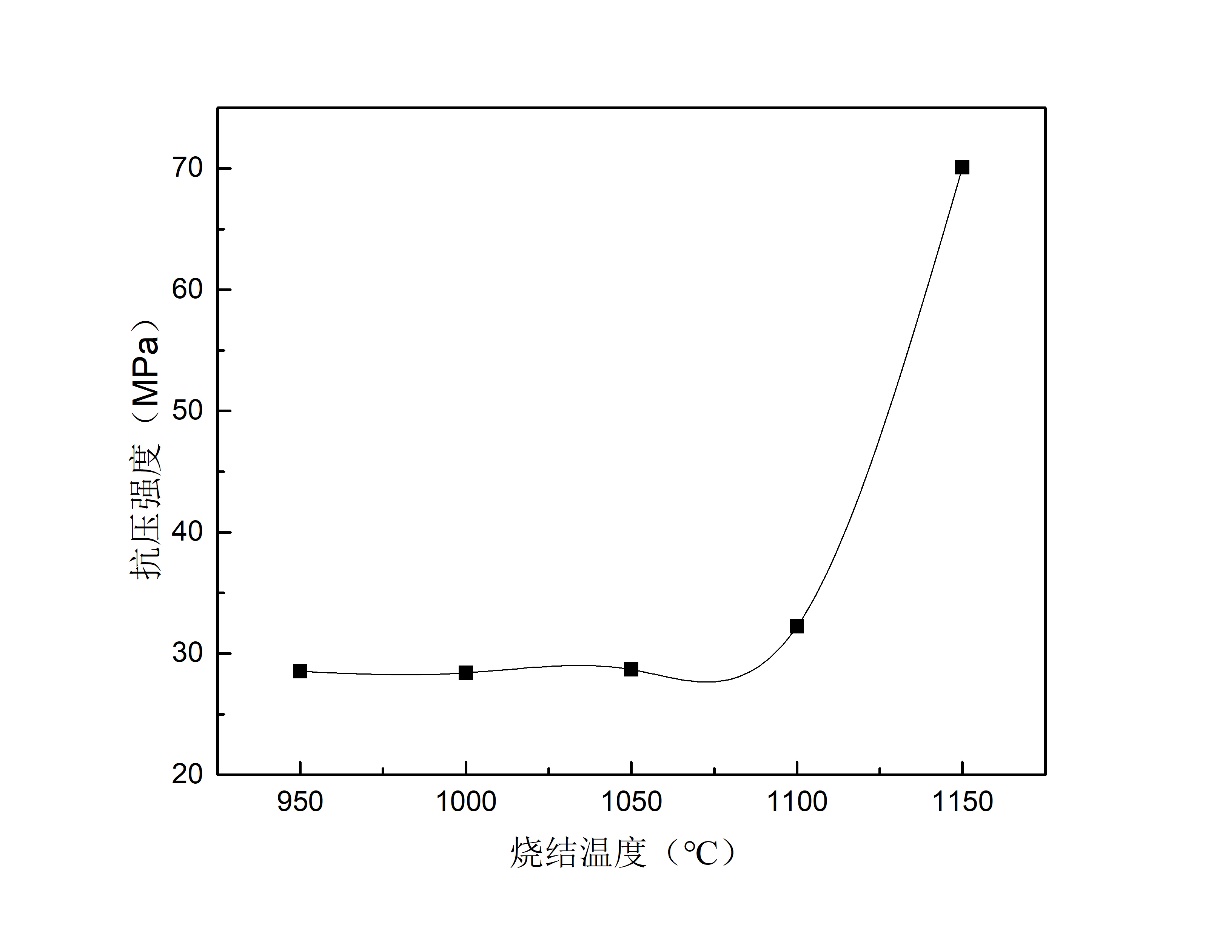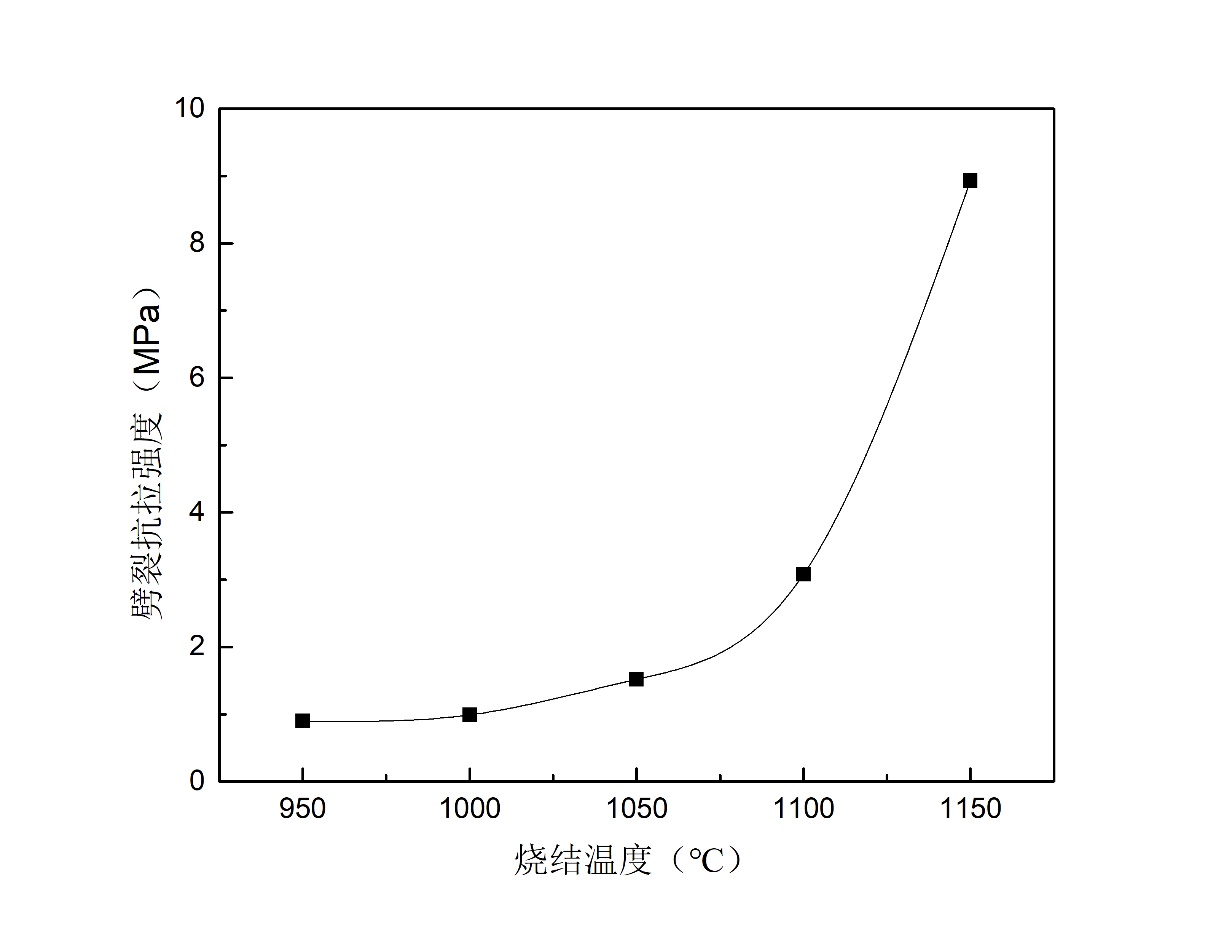河南某地金矿尾矿制备透水砖试验研究毕业论文
2020-03-03 10:00:47
摘 要
透水砖是一种绿色环保的建材。利用尾矿制备透水砖能达到尾矿再利用,资源化的目的。以河南某地选金尾矿为主要原料,以煤矸石做成孔剂,辅以膨润土,进行了透水砖的制备试验。
(1)研究了成型压力对透水砖性能的影响。成型压力越大,砖体越密实,透水砖的抗压强度随成型压力的增加呈现增大的趋势,劈裂抗拉强度也呈增大的趋势,而透水系数呈减小的趋势。
(2)研究了烧结温度对透水砖性能的影响。烧结温度的升高,使透水砖的抗压强度随之增大,劈裂抗拉强度亦随之增大,透水系数则是先增大后减小,甚至减小到0。在1150℃的烧结温度条件下,透水砖表面会有鼓起。鼓起的部分在较小的压力下会先破坏,但是砖的主体部分的抗压强度和劈裂抗拉强度都得到了极大的提升。透水系数在1100℃时增大到最大值,随后透水系数随烧结温度的升高而减小,在1150℃的烧结温度条件下,透水系数减小到0。
(3)研究了保温时间对透水砖性能的影响。保温时间的增加,使透水砖的抗压强度呈增大趋势。劈裂抗拉强度先增大后减小,在100min保温时间的条件下达到最大值3.91MPa后减小。透水系数也是先增大后减小,在80min保温时间的条件下达到最大值后减小并趋于稳定。
(4)研究了配方中两种选金尾矿的比例对透水砖性能的影响。随着白色砂矿在配方中占比的增大,透水砖的抗压强度和劈裂抗拉强度都在降低,透水系数逐渐增大。黄色泥矿在配方中占比的增加,会使透水砖的抗压强度逐渐增加,但对劈裂抗拉强度的没有明显影响,透水系数会随黄色泥矿占比的增加而逐渐减小。
(5)研究了煤矸石粒级对透水砖性能的影响。在进行试验的煤矸石粒级范围内,煤矸石粒级的增大对透水砖抗压强度的影响没有明显的规律,透水砖的劈裂抗拉强度随煤矸石粒级的增大呈降低的趋势,但对透水系数无明显影响。
试验结果表明,以该金矿选金尾矿为主要原料,辅以煤矸石和膨润土,可以制作出满足抗压强度和劈裂抗拉强度的透水砖,透水性能接近国标GB/T 25993-2010的标准。
关键词:选金尾矿,透水砖,抗压强度,劈裂抗拉强度,透水系数
Abstract
Permeable brick is a kind of green building material. The use of tailings to prepare permeable bricks can achieve the purpose of tailings reuse and resource utilization. We chose gold tailings in Henan Province as the main raw material, and coal gangue as the pore agent, and supplemented with bentonite, to conduct permeable brick preparation tests.
(1) The influence of the molding pressure on the performance of the permeable brick was studied. The greater the molding pressure is, the more dense the brick body is, and the compressive strength of the permeable brick increases with the forming pressure. The tensile cracking strength also increases, and the permeability coefficient decreases.
(2) The effect of sintering temperature on the properties of permeable bricks was studied. With the increase of the sintering temperature, the compressive strength of the permeable bricks increases, and the split tensile strength also increases. The permeability coefficient first increases and then decreases, and even decreases to zero. At a sintering temperature of 1150°C, the surface of the permeable brick will have a bulge. The bulging part will be destroyed first under less pressure, but the compressive strength and hardness of the main part of the brick have been greatly improved. The water permeability coefficient increases to a maximum at 1100°C, and then the water permeability coefficient decreases with increasing sintering temperature. Under the sintering temperature of 1150°C, the water permeability coefficient decreases to zero.
(3) The effect of holding time on the performance of pervious bricks was studied. As the holding time increases, the compressive strength of the permeable bricks tends to increase. The split tensile strength increases first and then decreases, and then decreases with a maximum value of 3.91MPa at the 100 min holding time. The water permeability coefficient also increases first and then decreases. After reaching the maximum value at the 80 min holding time, the water permeability coefficient decreases and tends to be stable.
(4) The effect of the proportion of two kinds of gold tailings in the formula on the performance of the permeable brick was studied. As the proportion of white sand ore in the formulation increases, the compressive strength and splitting tensile strength of the permeable bricks both decrease, and the water permeability coefficient increases gradually. As the proportion of yellow mud in the formula increases, the compressive strength of the permeable brick gradually increases, and there is no obvious rule for the effect of splitting tensile strength, and the permeability coefficient gradually decreases.
(5) The effect of coal gangue particle size on the performance of permeable bricks was studied. In the range of coal gangue particle size tested, the influence of the increase of coal gangue grain size on the compressive strength of permeable bricks is not obvious. The splitting tensile strength of permeable bricks decreases with the increase of coal gangue grain size. But it has no obvious influence on the water permeability.
The test results show that the gold mine tailings as the main raw material, supplement with coal gangue and bentonite, can produce permeable bricks that meet the compressive strength and splitting tensile strength. The water permeability is close to the national standard GB/T 25993-2010.
Keywords: gold tailings, permeable brick, compressive strength, splitting tensile strength, permeability coefficient
目录
第一章 绪论 1
1.1研究背景与意义 1
1.2国内外研究的进展 1
1.3论文的研究内容与目的 2
第二章 试验研究方法 3
2.1试验原材料及基本性能 3
2.1.1 选金尾矿 3
2.1.2 煤矸石 5
2.1.3 膨润土 6
2.2试剂,仪器及设备 7
2.3试验流程 8
2.4透水砖性能测试方法 8
2.4.1 抗压强度测试 8
2.4.2 劈裂抗拉强度测试 9
2.4.3 透水系数测试 9
第三章 金尾矿透水砖的制备及性能研究 10
3.1 预试验 10
3.1.1 初选温度 10
3.1.2 初选压制制度 10
3.1.3 初选配方中两种尾矿的比例 11
3.2适宜配方的确定 12
3.2.1 膨润土含量为6%的配方试验 12
3.2.2 膨润土含量为8%的配方试验 13
3.2.3 煤矸石含量为8%的配方试验 13
3.3 成型压力对透水砖性能的影响 14
3.4 烧结温度对透水砖性能的影响 16
3.5 保温时间对透水砖性能的影响 19
3.6 两种选金尾矿的比例对透水砖性能的影响 21
3.7 煤矸石粒级对透水砖性能的影响 25
3.8 小结 27
第四章 结论 29
参考文献 30
致谢 32
第一章 绪论
1.1研究背景与意义
仅2013年一年,我国就产生了16.49亿吨尾矿。其中,黄金尾矿达2.14亿吨,尾矿综合利用量为3.12亿吨,综合利用率为18.9%[1]。黄金尾矿的利用率并不高,选金尾矿除部分用于回填巷道及少量其他用途外[2],基本都在露天堆放。金尾矿属有色金属尾矿,有色金属尾矿的特点:量大、集中、颗粒细小、表面积大、流动性强、经干燥后易风化、污染空气;尾矿中存在的重金属元素会造成重金属污染,危害耕地和水源[3,4]。另一方面,大部分现代城市的地表都被建筑物以及混凝土所覆盖,形成了生态学上的“人造沙漠”[5]。不透水的路面给人们带来了便利,但也使得降水难以及时渗入地下,阻断了空气和土壤之间的热量和水分交换,导致城市温湿度失调,造成城市“热岛效应”和“雨岛效应”[6]。不透水路面使得降水基本都通过城市排水系统进入河流湖泊等水源中,这会加大城市排水系统的压力,容易引起城市内涝等问题。另外,对城市地下水的过量抽取,使城市地下水位越来越低,形成地质学上的“漏斗型”地下水位[7],引发地表沉降等环境问题。使用透水砖来铺设路面,是很好的解决这些城市生态问题的方法。用透水砖铺设路面也有助于打造“海绵城市”[8-10]。
透水砖较其它砖的优点主要是良好的透水性、透气性及保湿性[11,12]。在透水砖块中有开放的孔和通道,允许雨水渗透到土壤中。因此,透水砖的应用可以减少地表雨水径流并增加地下水补给。这对土壤水和地下水资源的补给起到了积极的作用,能有效地缓解硬化的路面对城市地下水资源的负面影响[1]。此外,透水砖的多孔性对调节地表局部空间的温度和湿度,缓解城市“热岛效应”起到了很大的作用[13-15]。由于透水砖有许多优点,透水砖已经被广泛应用于住宅人行道、人行道、停车场和步行区域[16]。许多文献[17-19]都证明了在城市雨水管理系统中透水砖所发挥出的良好作用。
1.2国内外研究的进展
透水砖作为一种环保建筑产品,具有许多优点。欧美日本等发达国家很早就开始了关于透水砖的研究,并且达到了应用的阶段。
日本早在上世纪70年代后期就着手研究透水性路面铺装。1987年,日本研究者申请了透水性路面材料专利[20]。
在上世纪80年代,美国已计划推广应用无细集料混凝土路面[21]。
在1996年,日本东京铺设了49.5万平方米的透水性材料的道路。
我国对透水砖的研究开展较晚,一些科研机构和高等院校于1993年开始研究透水混凝土与透水性路面砖,并于1995年开始在试点工程中应用。2000年初,某些省份的一些企业开始开发并小规模、间断性地生产了一些陶瓷透水砖。虽然我国对透水砖的研究与发展起步较欧美和日本等发达国家晚,但是进展却非常迅速[22]。
2006年,我国对混凝土透水砖的使用量已经大幅提高,混凝土透水砖产量已经增长到100万平方米[23]。
2010年上海世博会公园、南方一些高校的新校区建设和旧城区道路的改建等项目,均采用透水的路面[11]。
2015年,李诺[24]申请了一项铁尾矿耐磨砂基制备透水砖的专利,将中草药的废渣应用其中。
2016年,马跃等[25]申请了一项悬浮焙烧铁尾矿制备透水砖的专利,原来为悬浮焙烧铁尾矿、煤矸石、石灰石、膨润土和粘土。
1.3论文的研究内容与目的
研究主要内容如下:
1.分析该尾矿的粒度分布,元素富集状态,进行XRD测试;
2.该尾矿制备透水砖的试验研究:基础配方选择(原料的种类与配比),粗骨料选择,成型方式,烧结制度研究;
3.使用自制的测试透水砖透水系数的仪器设备研究透水系数与透水砖的力学性能的关系;
4.选择适宜的工艺条件,试验流程。并对制成的样品的抗折强度,劈裂抗拉强度,透水系数进行检测,与国标对比。
研究目的是争取利用该选金尾矿制备出合格透水砖以达到该尾矿再利用的目标。研究包含基础配方选择(原料的种类与配比),粗骨料选择,成型方式,烧结制度研究等几个方面,推荐适宜的工艺条件,试验流程。并对制成样品的抗折强度,劈裂抗拉强度,透水系数进行检测,与国标对比。
第二章 试验研究方法
2.1试验原材料及基本性能
2.1.1 选金尾矿
试验所用金尾矿取自河南某金矿,有两种矿样,按照颜色和粒度可分为白色砂矿和黄色泥矿。将两种矿样分别在太阳下晒干,分别混匀后对试样进行取样,对取样结果进行原矿粒度分析,XRD分析,XRF分析。
(1)白色砂矿。因砂矿粒度较粗,直接采用振筛机干筛,筛分结果见表2.1。对白色砂矿进行XRF分析,结果见表2.2。对白色砂矿进行XRD分析,白色砂矿XRD图谱见图2.1。
表2.1 白色砂矿粒度分析结果
粒级/mm | 产率/% | 筛上累计产率/% |
0.425 | 0.15 | 0.15 |
-0.425 0.27 | 6.16 | 6.31 |
-0.27 0.18 | 42.48 | 48.79 |
-0.18 0.15 | 16.28 | 65.07 |
-0.15 0.075 | 24.02 | 89.10 |
-0.075 0.045 | 8.70 | 97.80 |
-0.045 0.038 | 1.39 | 99.19 |
-0.038 | 0.80 | 100.00 |
白色砂矿的粒度主要集中在-0.27 0.075mm这个范围,其中,-0.27 0.18mm粒级的产率为42.28%。
表2.2 白色砂矿化学多元素分析结果
成分 | Na2O | MgO | Al2O3 | SiO2 | P2O5 | SO3 | K2O | CaO | TiO2 | MnO |
含量/% | 2.885 | 2.355 | 14.729 | 65.271 | 0.204 | 0.111 | 2.404 | 3.178 | 0.535 | 0.122 |
成分 | Fe2O3 | ZnO | Rb2O | SrO | WO3 | PbO | Cl | ZrO2 | CO2 | |
含量/% | 2.982 | 0.027 | 0.009 | 0.022 | 0.035 | 0.021 | 0.019 | 0.019 | 5.073 |
由XRF分析结果可知,白色砂矿的主要化学成分是SiO2、Al2O3,次要成分为Na2O、MgO、K2O、Fe2O3等。含有元素种类较多,成分较为复杂。
以上是毕业论文大纲或资料介绍,该课题完整毕业论文、开题报告、任务书、程序设计、图纸设计等资料请添加微信获取,微信号:bysjorg。
相关图片展示:
